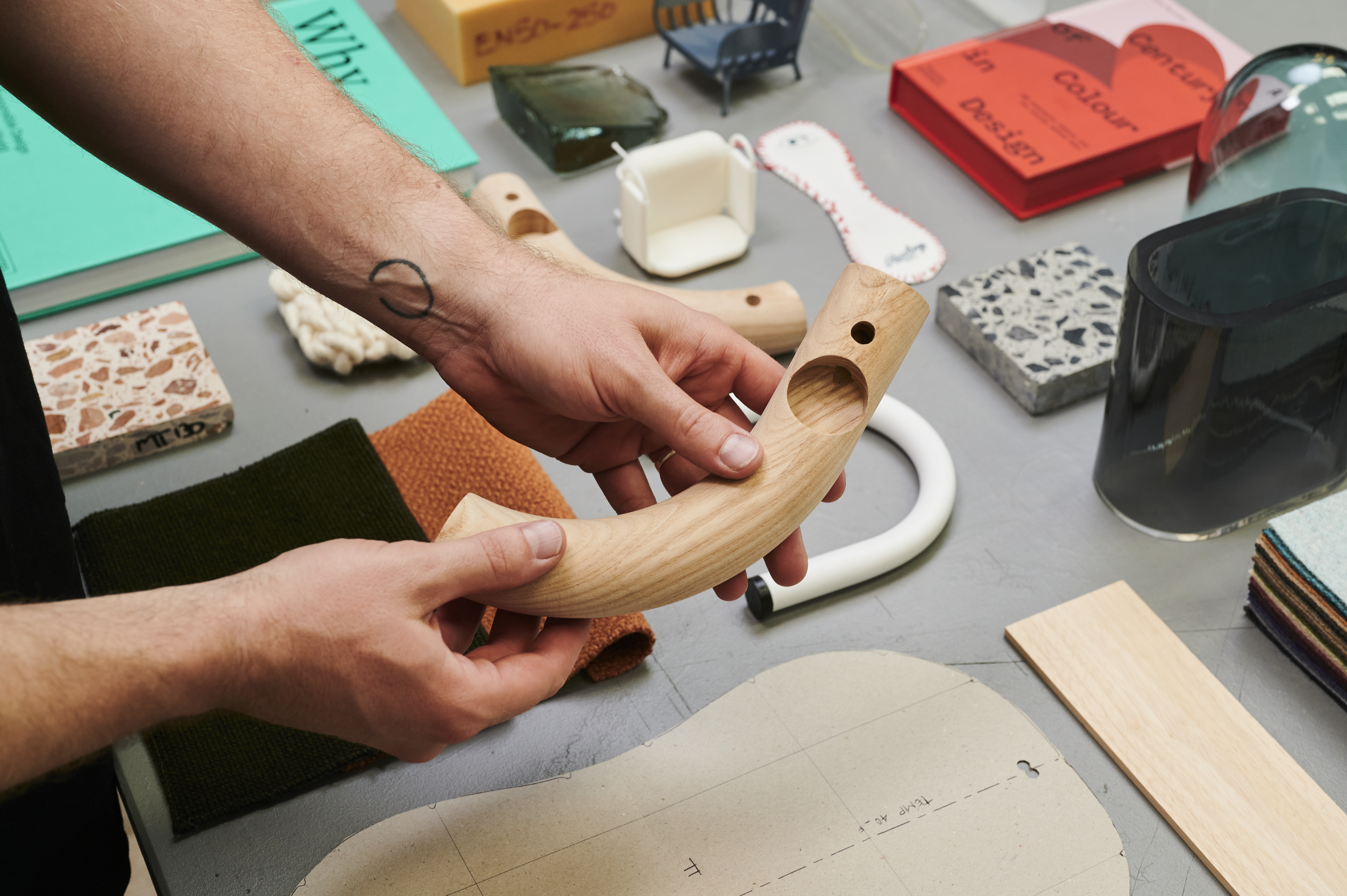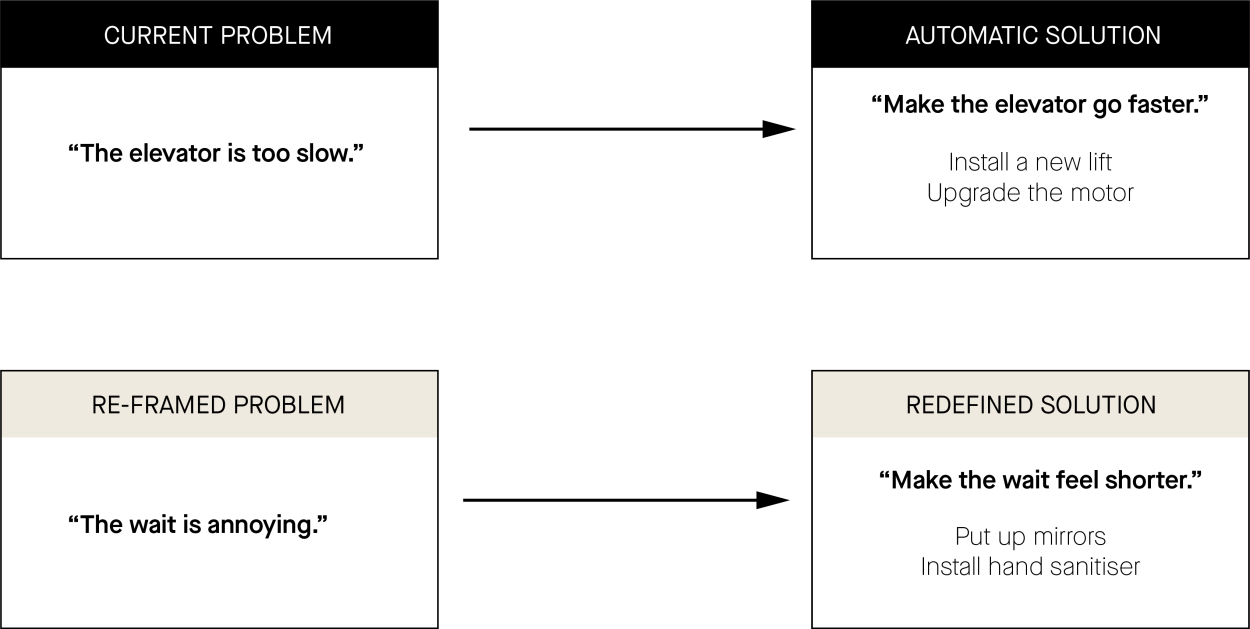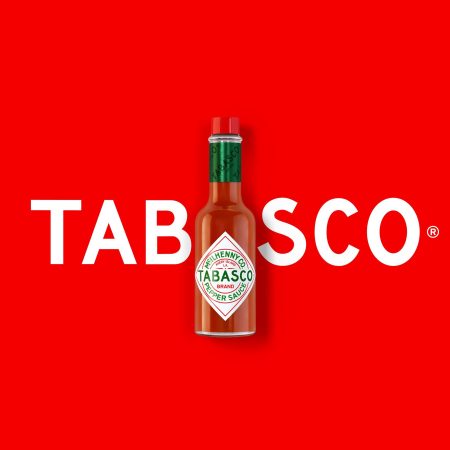One of the most common examples to explain this technique is the ‘Slow Elevator Problem’. The tenants of an office building are complaining that the elevator is too slow. When asked most people come up with these solutions; replace the lift or install a stronger motor. However, let’s re-frame the problem. The problem isn’t that the elevator is too slow, the problem is that the tenants find the wait annoying. A solution to this problem, let’s make this wait less annoying by putting up mirrors next to the elevator. This is proven extremely effective, as people tend to lose track of time when given something utterly fascinating to look at - themselves.
Here at the studio we often say that we’re in the business of solving problems. But that’s only one side of the coin. Before we solve a problem, we need to make sure that we’re solving the right problem. This is where problem diagnostics comes into play, framing the potential problem accurately so that the solution is the most beneficial for our clients. Hence, re-framing the problem to get the right solution.



The Slow Elevator Problem

We are often brought in to bring innovative solutions to a brand. Here are some potential ways that they’ve stated these problems.
“We’re not as innovative as our competitors.”
“We only bring one new product to market each year.”
So, how can you help?
Well, we would start by properly understanding the problems that they’re facing. The first statement is vague. How do you measure innovation and how do your competitors measure it? The second problem statement leads us to investigate the processes by which you bring new products to market, but not only that but whether that is the defined problem. Are you measuring the number of new products, or the value/revenue of those products? If you only bring one new product to market each year, but its highly successful does it matter? Is quantity more important that quality? By getting to the root of the problems, we can better understand how we can provide meaningful solutions.
The Tabasco Story

We’ll end with one of our favourite stories here at the studio. How did Tabasco solve their sales problems? Everyone knows the product, it’s great but it wasn’t selling. They had launched a popular television ad. The CEO was loudly complaining about how the expensive ad had gotten their customer’s attention but that the sales hadn’t increased. The CEO had framed the problem as, “How can we create an ad that causes more people to buy our product?”. A factory worker overheard the complaint, and looked at the CEO and said, “Why don’t you just make the hole on the bottle bigger?” Customers would unknowingly use more of the product and buy more bottles as a result. The problem was not a sales problem, but a product problem.
